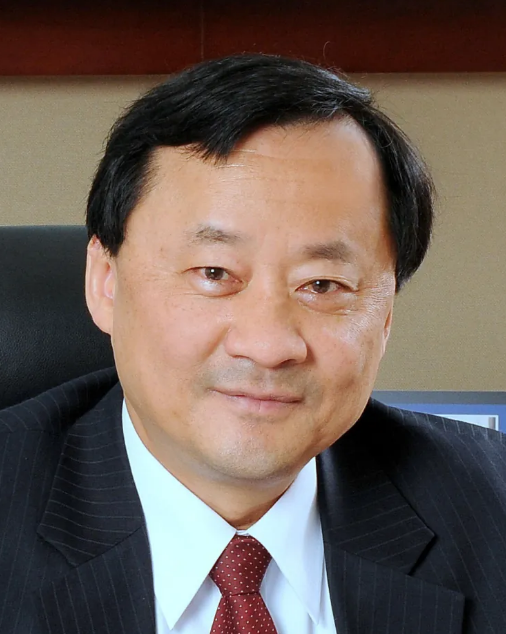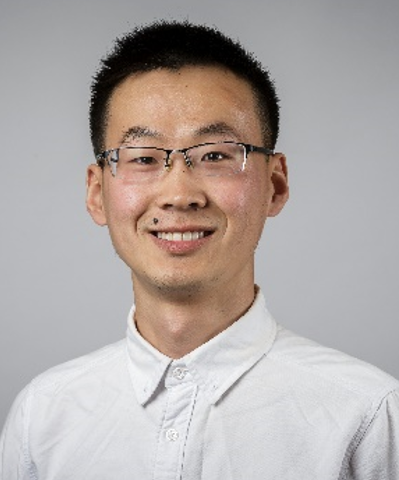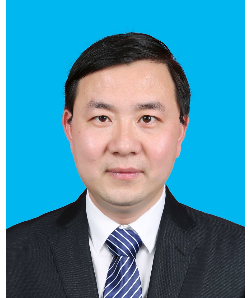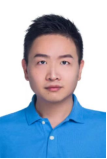Benjamin W. Wah (Yunsheng Hua is a Research Professor at the Chinese University of Hong Kong, and Franklin W. Woeltge Professor Emeritus of Electrical and Computer Engineering at the University of Illinois, Urbana-Champaign. Previously, he served as the Provost and Wei Lun Professor of Computer Science and Engineering of the Chinese University of Hong Kong, as well as the Franklin W. Woeltge Endowed Professor of Electrical and Computer Engineering and Professor of the Coordinated Science Laboratory of the University of Illinois, Urbana-Champaign, USA. Wah received his Ph.D. degree in computer science from the University of California, Berkeley, CA, in 1979. He has received many awards for his research and service contributions, including the IEEE-CS W. Wallace-McDowell Award (2006), the IEEE-CS Richard E. Merwin Award (2007), the IEEE-CS Tsutomu Kanai Award (2009), the Distinguished Alumni Award in Computer Science of the University of California, Berkeley (2011), and the Bronze Bauhinia Star of the Hong Kong Self Administrative Region (2021). Wah's research interests are nonlinear search and optimization, multimedia technologies, and artificial intelligence. Wah co-founded the IEEE Transactions on Knowledge and Data Engineering in 1988 and served as its Editor-in-Chief between 1993 and 1996. He is the Co-Editor-in-Chief of Computers and Education: Artificial Intelligence and the Honorary Editor-in-Chief of Knowledge and Information Systems. In addition, Wah served the IEEE Computer Society in various capacities, including Vice President for Publications (1998 and 1999) and President (2001). He is a Fellow of the AAAS, ACM, and IEEE.

| Prof. Yunsheng HuaThe Chinese University of Hong Kong, China(AAAS Fellow, ACM Fellow, IEEE Fellow) |
Prof. Baojie HeChongqing University, China(World's Top 2% Scientists 2024)Research interests: High temperature resilience urban planning and design, High temperature mitigation and adaptation, Urban design and carbon cycle Professor, doctoral supervisor, Hongshen Young Scholar, Bayu Scholar (young). He graduated from the Department of Built Environment at the University of New South Wales. Professor He is also a Visiting Associate Professor at the School of Architecture, Design and Planning at the University of Queensland and head of the Centre for Climate Resilience and Low Carbon Cities at Chongqing University. He has served as associate editor and editorial board member of several international journals, including Human Settlements and Sustainability, Science Progress and Frontiers in Climate. Professor He is actively involved in research and the organization of international conferences in the field of climate change and environmental sustainability. In addition, he is also a director of the Underground Space Professional Committee of the Architectural Society of China, with a rich academic background and extensive academic influence. Professor He was selected as one of the world's top 2% top scientists in 2024 and one of Elsevier's Most Cited Scholars in China (Architecture) in 2024. |
|
| Prof. Jianqiang YanNorthwest University, ChinaResearch interests: Computer vision, multimedia processing, data analysis and mining, machine learning, intelligent transportation Doctor of Engineering, senior engineer. He is also an executive member of the Professional Committee of China Computer Society, a director of Shaanxi Highway Society, a director of Shaanxi Big Data and Cloud Computing Association, a member of the image and graphics Professional Committee of Shaanxi Electronics Society, a special expert of Shaanxi Innovation Talent Development Institute, and a leader of Xi 'an Intelligent Transportation think tank. His main research interests include computer vision, multimedia processing, data analysis and mining, intelligent information processing, smart city, intelligent transportation, etc. In recent years, he has presided over more than 10 scientific research projects, solved problems such as abnormal detection of taxi cameras and identification of passenger congestion in buses, applied for more than 10 invention patents, and published more than 10 academic papers in core journals. He presided over and participated in the construction of a number of large-scale informatization projects, including 5 projects with more than 10 million yuan, 2 projects supported by the SME Science and Technology Innovation Fund of the Ministry of Science and Technology, and won the third prize of Shaanxi Provincial Science and Technology Award 2 prizes as the first and second complete person, and the second prize of Science and Technology Award of Shaanxi Provincial universities 2. In 2021, it was awarded "Xi 'an Model Worker Innovation Studio" by Xi 'an People's Government, "Xi 'an Young Science and Technology Talent Award" by Xi 'an Municipal Committee of the Communist Party of China in 2020, "Excellent Science and Technology Worker" by China Institute of Electronics in 2020, and "Science and Technology Innovation Young Talents" by Shaanxi Provincial Transportation Department in 2019. In 2019, Xi 'an Youth League Committee awarded the title of "Xi 'an Good Youth"; In 2019, Xi 'an Youth League Committee awarded the title of "Xi 'an Youth May Fourth Star"; In 2018, it was awarded the "Golden Bridge Award" by China Technology Market Association, the "Xi 'an Craftsman" by Xi 'an People's Government in 2018, the "Xi 'an Top Ten Programmers" by the Global Programmer Committee in 2018, and the title of "Professional Technology Leader" by Xi 'an Yanta District in 2017. |
Prof. Lu SunXi’an Jiaotong University, ChinaResearch interests: Low-carbon city, energy system optimization He has rich research achievements and practices in low-carbon cities and energy system optimization, ecological industrial parks, circular economy, low-carbon development of key industrial sectors, and energy big data analysis models. He has published more than 80 research papers in domestic and foreign journals, 4 ESI hot and highly cited papers, and 2 monographs. In recent years, he has been cited more than 3120 times by first-class international journals such as Nature, H-index 33, and was invited to be an expert reviewer of the circular economy development report of the Asia-Pacific Region of the United Nations Center for Regional Development (UNCRD), and an expert reviewer of the Sixth IPCC report. He has been interviewed by academic institutions, "Dragon TV", "People's Daily" and other media and relevant government departments. |
|
| Prof. Mingbo NiuChang' an University, ChinaResearch interests: Vehicle new energy development, application and energy storage technology; Smart grid and transmission theory; Integrated traffic systems and intelligent road technology; Machine learning and deep learning; Internet of Things and big data technology research NIU Mingbo, Full Professor, “Chang'an Scholars” Distinguished Professor, a well-known expert in the fields of transportation-energy, vehicle-power, electrical-microgrid, Ph.D. Supervisor of the School of Energy and Electrical Engineering at Chang'an University, and a Registered Professional Engineer of Canada (recognized worldwide). Prof. Niu is the Director and Chair of Shaanxi International Innovation Center for Transportation-Energy-Information Fusion and Sustainability. He is also heading the IVR Low Carbon Research Laboratory (IVR LAB) and Micro and Nano Experimental Space. Prof Niu is a member of the Internet of Things Committee of the China Institute of Communications, and a senior member of the China Highway Society. He was awarded of China's National Outstanding International Student and reported in “Shenzhou Scholar” Magazine. He ever worked as a scientific researcher in a state key laboratory, under supervision of Prof. Xu Demin, an academician of Chinese Academy of Engineering. He received a PhD degree in Applied Science/Philosophy from the University of British Columbia (UBC) and has published over 60 high-quality academic papers and publications (39 of which are first-author works), including IEEE Transactions on Geoscience and Remote Sensing, IEEE Transactions on Communications, IEEE Transactions on Aerospace and Electronic Systems, and OSA Optics Express, Electric Power System Research, Journal of Supercritical Fluids, IEEE Sensors Journal, and IEEE/OSA JOCN (won the IEEE Best Paper Award; Only five OWC papers worldwide have received this honor to date). He formerly served as an expert in the editing and review of high-quality textbooks by Oxford University Press, a guest Editor-in-Chief of Wiley SCI international journals, Academic Editor-in-Chief of the "Advanced Circuit Systems" project by the EU InTech Academic Publishing Group. He served as a General Chair of the 3rd and 4th International Conference on Intelligent Transportation Systems and Smart Cities (ITSSC), TPC Chair, and technical committee member of many reknown IEEE International Conferences. Prof. Niu has served as a reviewer for more than 20 international top journals such as Science China, IEEE TSP, Applied Energy, IEEE TITS, IEEE JSAC, Energy Conversion and Management, etc. |
Prof. Chunping MiaoChang' an University, ChinaResearch interests: Urban spatial form and microclimate, urban forest ecosystem services, artificial intelligence and urban planning Professor Chunping Miao, doctoral supervisor, Master's supervisor (Urban and Rural Planning), candidate of Shaanxi Province Talent Plan, Executive director of Urban Forest Branch of Chinese Forestry Society, editorial board member of Human Settlements and Sustainability, Young editorial board member of Chinese Urban Forestry and Journal of Ecology. |
|





